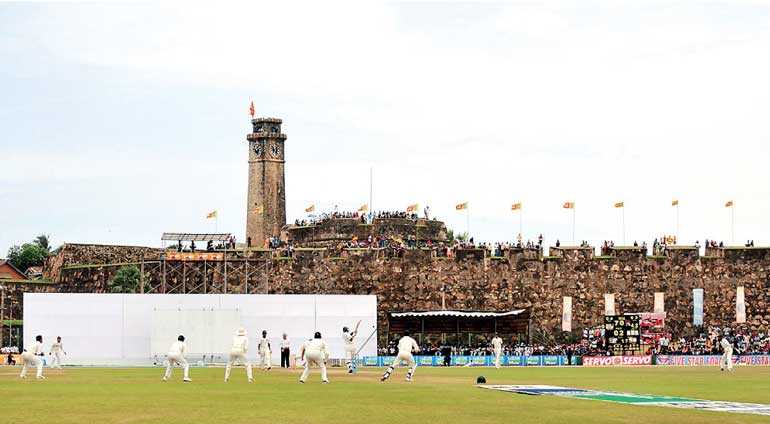Tuesday Mar 11, 2025
Tuesday Mar 11, 2025
Saturday, 21 July 2018 00:10 - - {{hitsCtrl.values.hits}}

AFP: Sri Lanka’s picturesque Galle International Cricket Stadium could be demolished because its pavilion stand violated heritage laws protecting a 17th century Dutch fort, the Government said yesterday.
Cultural Affairs Minister Wijeyadasa Rajapakshe told Parliament the Fort risked losing UNESCO World Heritage status because of unauthorised construction, including the 500-seat pavilion.
“We have to decide if we want to remain on the World Heritage list or keep the pavilion,” Rajapakshe said.
The Galle stadium is one of the most renowned in the world because of its setting.
However, Rajapakshe noted that the government plans to build another stadium in Galle, 115 km (72 miles) south of Colombo. “We could have another cricket grounds in Galle soon,” he added.
The Galle pavilion was built in 2008, four years after the grounds was devastated by the December 2004 Asian tsunami, which killed at least 31,000 people in the country.
Galle, which favours spinners, has been a lucky venue for the National team. Sri Lanka has won a majority of matches played there since 1998.
Last week, they won the first Test against South Africa by 278 runs with two days to spare.
“There will be no immediate demolition of the Galle Stadium,” Sports Minister Faiszer Musthapha said.
“We want to maintain the World Heritage status for the Fort. We will work out an alternative for the cricket stadium,” he added.
Official sources said a November Test match against England could be the final International at the current Galle Stadium.
Southern Development Minister Sagala Ratnayaka noted that UNESCO did not object to the cricket grounds, but wanted unauthorised structures around it removed, including the two-storey pavilion.
The building named after former President Mahinda Rajapakse obstructs the view of the Fort from the main Galle road.
The Fort was initially built by the Portuguese, who colonised the island in 1505. However, many of the buildings at the site were built by the Dutch who drove out the Portuguese in 1640.
The English captured Galle in 1796, but did not make any significant alterations to the structures in the walled city. It is now a key tourist attraction.
Discover Kapruka, the leading online shopping platform in Sri Lanka, where you can conveniently send Gifts and Flowers to your loved ones for any event including Valentine ’s Day. Explore a wide range of popular Shopping Categories on Kapruka, including Toys, Groceries, Electronics, Birthday Cakes, Fruits, Chocolates, Flower Bouquets, Clothing, Watches, Lingerie, Gift Sets and Jewellery. Also if you’re interested in selling with Kapruka, Partner Central by Kapruka is the best solution to start with. Moreover, through Kapruka Global Shop, you can also enjoy the convenience of purchasing products from renowned platforms like Amazon and eBay and have them delivered to Sri Lanka.
Discover Kapruka, the leading online shopping platform in Sri Lanka, where you can conveniently send Gifts and Flowers to your loved ones for any event including Valentine ’s Day. Explore a wide range of popular Shopping Categories on Kapruka, including Toys, Groceries, Electronics, Birthday Cakes, Fruits, Chocolates, Flower Bouquets, Clothing, Watches, Lingerie, Gift Sets and Jewellery. Also if you’re interested in selling with Kapruka, Partner Central by Kapruka is the best solution to start with. Moreover, through Kapruka Global Shop, you can also enjoy the convenience of purchasing products from renowned platforms like Amazon and eBay and have them delivered to Sri Lanka.